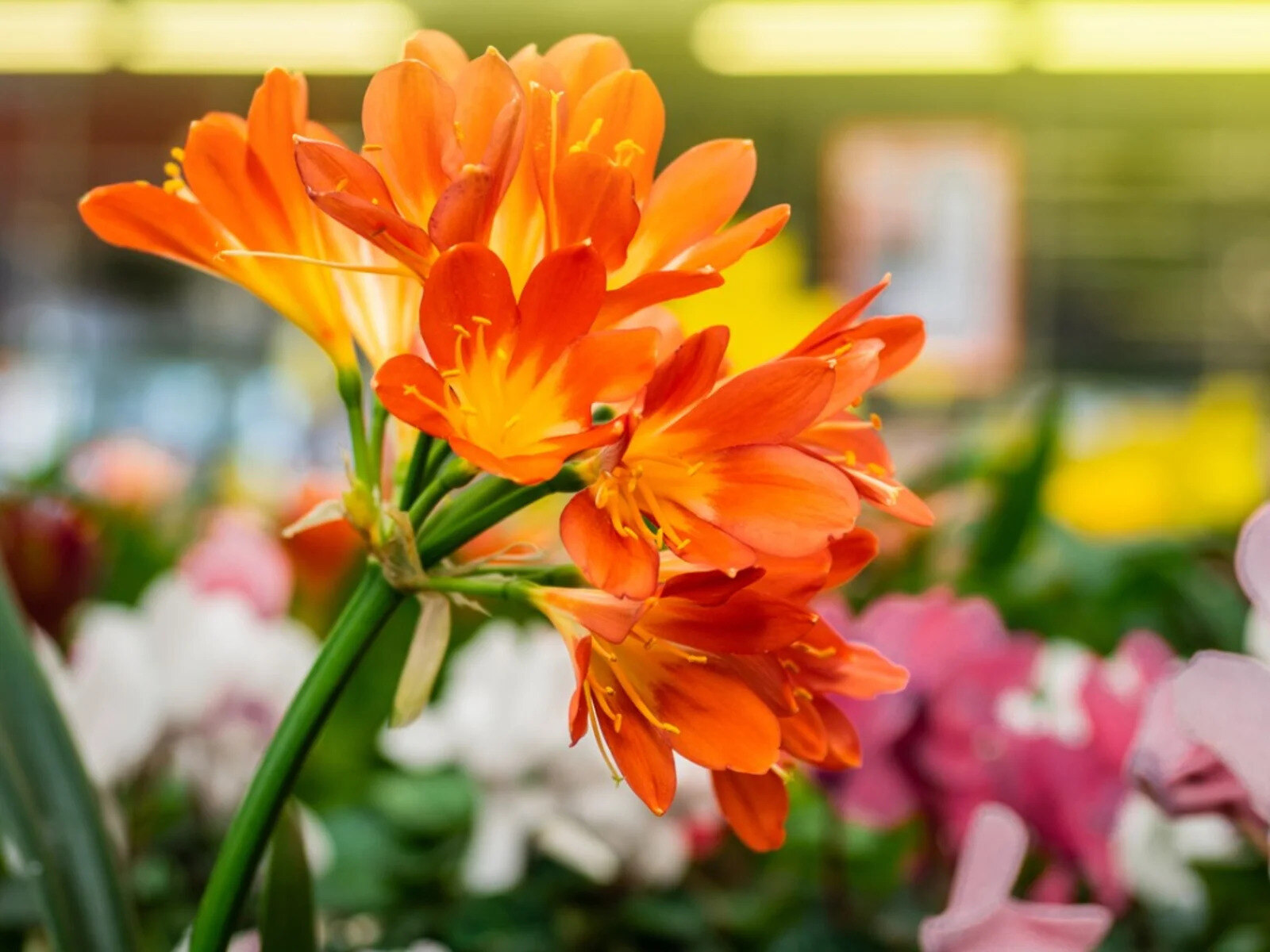
Clivia is a fascinating plant that has captivated the hearts of plant enthusiasts and collectors around the world. With its vibrant blooms and unique features, Clivia is not just another ordinary plant. In fact, there are many enigmatic facts about Clivia that make it an intriguing subject of study and admiration.
In this article, we will delve into the world of Clivia and uncover 16 intriguing facts about this captivating plant. From its origins and symbolism to its care requirements and unusual traits, there is so much to discover about Clivia that will surely leave you in awe.
So, get ready to immerse yourself in the enchanting world of Clivia as we unravel some of the most enigmatic secrets behind this remarkable plant.
Key Takeaways:
- Clivia, also known as bush lily, is a vibrant and popular houseplant native to southern Africa, blooming in shades of orange and yellow, and symbolizing good luck in some cultures.
- With its trumpet-shaped flowers and long, strap-like leaves, Clivia can thrive indoors or outdoors, producing colorful berries and living for several decades with proper care.
Clivia is native to southern Africa.
‘,
‘
With its origins in the lush woodlands of South Africa, Clivia thrives in subtropical climates, making it a popular choice for gardeners in warmer regions.
‘,
‘
Clivia blooms in shades of orange and yellow.
‘,
‘
The stunning clusters of flowers that adorn Clivia plants are known for their vibrant hues, ranging from fiery oranges to sunny yellows, adding a burst of color to any garden or indoor space.
‘,
‘
The flowers of Clivia are trumpet-shaped.
‘,
‘
The unique shape of Clivia flowers adds to their allure. Resembling miniature trumpets, these blooms have a distinct charm that sets them apart from other flowering plants.
‘,
‘
Clivia is a popular houseplant.
‘,
‘
Due to its ease of care and striking appearance, Clivia has gained popularity as a houseplant worldwide. Its ability to thrive in low-light conditions makes it a perfect choice for indoor cultivation.
‘,
‘
The leaves of Clivia are long and strap-like.
‘,
‘
The foliage of Clivia plants consists of long, sturdy leaves that resemble straps, adding an elegant touch to its overall aesthetic.
‘,
‘
Clivia is named after Lady Charlotte Clive.
‘,
‘
The genus name “Clivia” is derived from the name of Lady Charlotte Clive, the Duchess of Northumberland, who was a keen botanist and plant collector.
‘,
‘
Clivia is a member of the Amaryllidaceae family.
‘,
‘
Clivia belongs to the Amaryllidaceae family, which includes other popular flowering plants like daffodils and snowdrops.
‘,
‘
Clivia blooms in spring.
‘,
‘
Springtime brings forth the stunning blossoms of Clivia, adding a touch of vibrancy to gardens and landscapes during this season of renewal.
‘,
‘
Clivia is a symbol of good luck.
‘,
‘
In some cultures, Clivia is believed to bring good fortune and prosperity to its owners. It is often gifted to friends and loved ones as a token of good luck.
‘,
‘
Clivia requires well-draining soil.
‘,
‘
For optimal growth, Clivia requires well-draining soil that retains moisture without becoming waterlogged. A mix of peat moss and perlite is recommended for its cultivation.
‘,
‘
Clivia produces berries after flowering.
‘,
‘
Once the flowers of Clivia have faded, the plant produces colorful berries that add visual interest and can be propagated to grow new Clivia plants.
‘,
‘
Clivia can be propagated through division.
‘,
‘
Clivia plants can be propagated by dividing the rhizomes, allowing gardeners to expand their collection or share this beautiful plant with others.
‘,
‘
Clivia can be grown indoors or outdoors.
‘,
‘
Whether you have a sunny balcony or a cozy corner indoors, Clivia can thrive in both environments with appropriate care. It adapts well to different growing conditions.
‘,
‘
Clivia can live for several decades.
‘,
‘
With proper care, Clivia plants can live for many years, becoming long-lasting companions that bring beauty and joy to their surroundings.
‘,
‘
Clivia is not edible.
‘,
‘
While Clivia plants are admired for their exquisite beauty, it is important to note that they are toxic if ingested, so it is advised to keep them away from children and pets.
‘,
‘
Clivia has cultural significance.
‘,
‘
In addition to being a beloved plant, Clivia holds cultural significance in countries like South Africa, where it is celebrated and represented in festivals and ceremonies.
Conclusion
In conclusion, Clivia plants are fascinating and enigmatic in many ways. From their vibrant blooms to their ability to thrive in low-light conditions, Clivia plants are a popular choice for plant enthusiasts and collectors alike. Learning about the various characteristics and facts about Clivia can deepen our appreciation for these beautiful plants. Whether you are looking to add a touch of color to your indoor space or create a stunning outdoor display, Clivia plants are sure to impress. So go ahead, explore the world of Clivia plants and unlock the mysteries of these captivating botanical wonders.
FAQs
1. How often should I water my Clivia plant?
Clivia plants prefer to be slightly on the drier side, so it’s important not to overwater them. Allow the topsoil to dry out between waterings, and ensure good drainage to prevent waterlogged roots.
2. Can I grow Clivia plants indoors?
Yes, Clivia plants can be grown indoors. They prefer bright, indirect light and can thrive even in low-light conditions. Just make sure to keep them away from cold drafts and provide proper ventilation.
3. How often should I fertilize my Clivia plant?
During the growing season, it is recommended to fertilize Clivia plants every two to three weeks using a balanced, water-soluble fertilizer. Reduce the frequency during the dormant period.
4. How do I propagate Clivia plants?
Clivia plants can be propagated through division or by collecting seeds. Divide the plant during the dormant season, ensuring each division has a healthy root system. Sow seeds in a well-draining soil mix and provide warmth and humidity for successful germination.
5. Do Clivia plants require any specific temperature or humidity conditions?
Clivia plants prefer temperatures between 60-85°F (15-29°C) and a humidity level of around 50-60%. They can tolerate slightly lower temperatures during the dormant period but should be kept away from cold drafts.
6. Do Clivia plants have any specific pest or disease issues?
Clivia plants are generally resistant to pests and diseases. However, they can be susceptible to mealybugs, scale insects, and root rot if overwatered. Regularly inspect your plants for any signs of infestation and take prompt action if needed.
Was this page helpful?
Our commitment to delivering trustworthy and engaging content is at the heart of what we do. Each fact on our site is contributed by real users like you, bringing a wealth of diverse insights and information. To ensure the highest standards of accuracy and reliability, our dedicated editors meticulously review each submission. This process guarantees that the facts we share are not only fascinating but also credible. Trust in our commitment to quality and authenticity as you explore and learn with us.


